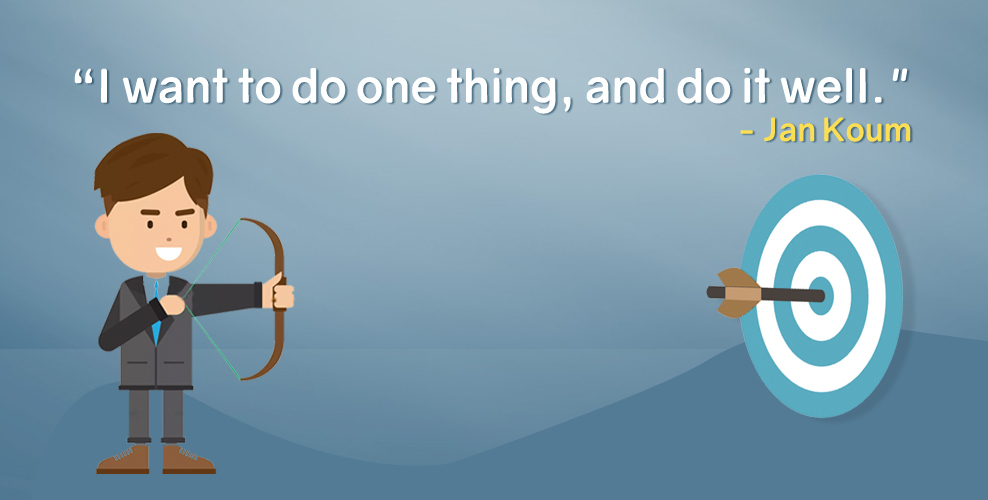Jan Koum, the WhatsApp Builder who went from rags to riches…for real!

App Builder Appy Pie, Nov 27: WhatsApp, an app that has changed the way we socialize was the brain child of Jan Koum. Quite ironically a social recluse himself, Koum is known to lead quite a low profile life. However, as we delve deeper into the persona that he is, the irony might fade a little. Even as a young professional, he was never the one to seek out fame or fortune and this might have something to do with where he came from and the impact it had had on him. It was his humble beginnings that have shaped him up to be a ‘sensible’ man as they say and he is famously known to optimize his and the company’s expenses to the extent that many would be surprised by.
In 1976, Jan Koum was born in Kiev, Ukraine and at that time it wasn’t the center of industrial, scientific, educational and cultural evolution as it is today. Growing up in a house that didn’t have running water or electricity wasn’t fun and in an effort to look for a better life for her family, Koum’s mother and Koum moved to the US in 1992 leaving his father behind, who was to join them as they settled down. One of the anecdotes that Koum has often shared about the place concerns his school life, where the schools would not have inside lavatories for the children. In the infamous Ukrainian cold, where the temperatures were known to dip down to -20°C the small kids would have to leave the premises and cross the entire parking lot to get to the bathroom. Before independence, he remembers Ukraine as being a stringently closed society and living in such a scenario was an experience by itself. Life in US wasn’t really the American Dream though and they were lucky to get on a social welfare program and get a two bedroom apartment. Koum’s mother began working as a babysitter and Jan worked as a janitor at a grocery store. The mother-son duo at the time were living on welfare, food stamps and their paltry combined income. It was at the age of 18 that he discovered his love for programming and enrolled in San Jose State University while working as a security tester for Ernst & Young.
One of the most interesting things about this though was that he still didn’t own a computer, and was learning everything from resources like reading manuals and training guides that he would buy, and then return after reading to save money. Koum, like many of his counterparts did not have the patience to finish his higher education. During the short stint at Ernst & Young Koum made acquaintance with Brian Acton who joined a very young Yahoo and helped Koum get an interview at the firm. This began a nine year long association with Yahoo where he began as an infrastructural engineer and ended when he was the manager of infrastructural engineering.
It was his time at Yahoo that solidified what would prove to be a strong bond of friendship with Acton. It was during his employment with Yahoo that he joined w00w00, a hacker group that focused largely on security focused hacking where he met future founders of Napster. Apart from these two events, his engagement with the organization was pretty uneventful. It was in the year 2007 when both Koum and Acton resigned from the firm and took a whole year off. This year off was spent mostly travelling through South America and playing Ultimate Frisbee. Once this year was over and the duo was back home, they now started looking for options to engage themselves. Quite interestingly both the men applied and tried to gain employment in Facebook at the time, but failed. In 2009, Koum bought an iPhone and while using the seven month old App Store, it dawned on him how fertile this space was going to be for the whole app industry to spawn and flourish. This was the time when he was desperately looking for something to do, as the vacation indeed was over.

Related Articles
- A Comprehensive Guide to Help Desk Software for Efficient Support Management
- Top 41 Graphic Design Companies in 2024
- 22 Non Profit Logo Examples for Inspiration
- ViDiT-Q: Efficient and Accurate Quantization of Diffusion Transformers for Image and Video Generation
- Analogist: Out-of-the-box Visual In-Context Learning with Image Diffusion Model
- How to double your conversion rate with an interactive questionnaire?
- General Knowledge Questions & Answers
- Google Home Finds Its Way Into 7 More Countries
- What is RACI Model? A Guide to Project Role Clarity
- Chatbot: What Is A Chatbot? Everything You Need To Know

